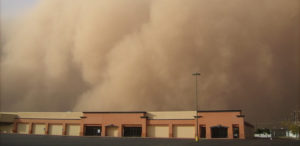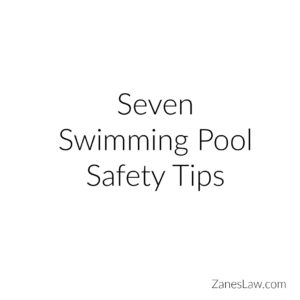![]() Contact Us (866) 499-8989
Contact Us (866) 499-8989
Is There a Cap on Wrongful Death?
- Why Do States Impose a Cap on Wrongful Death Cases?
- What Restrictions Does Arizona Impose on Wrongful Death Cases?
- Which Surviving Members Can File a Wrongful Death Claim in Arizona?
- How Can Claimants Maximize the Amount Offered in a Wrongful Death Settlement?
- Is Difficult to Prove Wrongful Death?
- How Are Wrongful Death Settlements Paid Out?
- What to Do if You are Involved in a Wrongful Death Case in a State That Caps Damages
- Home
- FAQs
- Wrongful Death
- Is There a Cap on Wrongful Death?
If you are the family member or estate beneficiary of a person who has passed away due to wrongful death, you must be aware of the restrictions imposed on Arizona’s wrongful death cases. The types of damages that you may obtain are limited, but the possible wrongful death settlement amount may be in the thousands or higher.
These civil disputes allow the surviving members to take legal action against the person or entity whose negligence resulted in the death of their loved one. If the deceased had lived, they would have been able to file a personal injury claim, which has no cap but is limited to certain types of compensation as well. Examples include medical negligence, fatal collisions, and more.
This article will explore several aspects of wrongful death cases that may not be common knowledge, including the factors that determine your settlement amount. For you to make the best decision possible regarding your case, our Arizona wrongful death attorneys have compiled the most frequently asked questions for your review.
Why Do States Impose a Cap on Wrongful Death Cases?
Several factors may lead to states capping wrongful death claims:
- To prevent excessive damages from placing a financial burden on defendants or insurance providers
- To reduce the number of frivolous or pointless lawsuits
- To encourage uniformity in the legal system and guarantees that similar cases are handled equitably
Overall, the decision to cap damages in wrongful death cases differs per state and is based on a variety of variables, including the political climate and the overall objectives of the state’s legal system. Luckily for Arizona plaintiffs, there is no limit on how much can be awarded in a wrongful death claim.
For a free legal consultation, call (866) 499-8989
What Restrictions Does Arizona Impose on Wrongful Death Cases?
Instead of there being a cap on settlement amounts in wrongful death cases in Arizona, the limitation focuses more on the type of damages one can receive from a wrongful death suit. Pecuniary damages, such as medical costs, funeral, and burial expenses, loss of services, support, and consortium, are the main damages that can be recouped.
In rare instances, punitive damages will be awarded for cases in which egregious circumstances were present. This type of wrongful death settlement does have a cap. Under Arizona law, the maximum amount of compensation available in punitive damages is three times the amount of pecuniary damages or $2 million, whichever is greater.
Which Surviving Members Can File a Wrongful Death Claim in Arizona?
The legal requirements for making a wrongful death claim vary by state. ARS 12-612 in the state of Arizona specifies who may file a lawsuit for wrongful death. These individuals include:
- Surviving partner
- Kids
- Parents or legal guardian
- Designated representative
If the decedent left a will, the executor of that will have the legal right to file a wrongful death lawsuit on the decedent’s estate’s behalf. Additionally, if there are several claimants interested in filing a wrongful death lawsuit in Arizona, they must all agree on who will represent them in court as well as how any awarded damages would be divided among them.
Click to contact our personal injury lawyers today
How Can Claimants Maximize the Amount Offered in a Wrongful Death Settlement?
Maximizing the amount offered in your wrongful death suit can be complex, but since there is no cap on an Arizona wrongful death settlement award, the following steps can be implemented to improve your chance of receiving a fair settlement:
Employ An Experienced Wrongful Death Attorney in Arizona
The key to maximizing your compensation may be to work with a lawyer who has experience handling wrongful death cases. A lawyer can represent you in negotiations with insurance companies, medical professionals, and others while assisting you in understanding your legal rights.
Be Meticulous At Record Keeping
Maintain thorough records of all costs associated with the death, such as medical bills, funeral costs, and lost wages. This will help you determine the entire degree of your losses and will support your case.
Prove Liability
The foundation of any wrongful death lawsuit is demonstrating that the defendant was accountable for the death. You can strengthen your argument by gathering evidence like eyewitness statements, medical records, and accident reconstruction reports. If you don’t have time for that or know where to start, an attorney will be able to provide resources.
Remain Persistent and Patient With the Process
Loss is hard, and no matter how badly you want answers, wrongful death investigations need to be thorough and will take time. Negotiating wrongful death compensation can be a drawn-out procedure as well, so it’s crucial to create a fair timeline with your lawyer and to remain dedicated to the procedure.
Complete a Free Case Evaluation form now
Is Difficult to Prove Wrongful Death?
It might be difficult to satisfy the burden of proof in a wrongful death lawsuit. Depending on the details of the case, expert witnesses who charge hundreds of dollars an hour for their expertise may be necessary for this.
If you can’t afford an expert for your case, you can hire a wrongful death lawyer whose firm will cover the costs. After you receive your compensation, your attorney will charge you after covering these expenses on their end.
How Are Wrongful Death Settlements Paid Out?
Settlements in Arizona are frequently paid out using either a lump sum or structured settlement.
An initial payment paid to the claimant(s) after a fatal accident is known as a “lump sum” payout. In some cases, the beneficiaries will agree on a settlement amount, which may be covered out-of-pocket by the defendant or by their insurance provider. The lump sum payment’s size will be determined by the claimant’s entitlement to damages as well as the quantity decided upon during settlement negotiations.
Contrarily, structured settlements call for the gradual payment of damages, frequently through the use of an annuity or other financial instrument. These payments may be disbursed over several years and may be intended to give the claimant or claimants consistent income for a certain amount of time.
Both lump sum payouts and structured settlements have benefits and drawbacks, and the optimal choice will depend on the particulars of the case. To weigh their options and select the payment plan that best suits their needs, claimants should consult with their attorney frequently.
What to Do if You are Involved in a Wrongful Death Case in a State That Caps Damages
As mentioned, unlike Arizona, some states place a cap on monetary damages. The specific regulations will vary depending on the state and case type, but it is important to get in touch with a knowledgeable attorney in your area who can help you navigate the legal process in its entirety. Examples of states with caps on damages include:
- Virginia: The maximum damages in wrongful death lawsuits in Virginia are $2 million.
- Florida: Florida imposes a cap of $500,000 on non-economic damages, but this cap may be raised to $1 million in situations involving egregious negligence or deliberate misconduct.
- Texas: Texas has a $500,000 cap on non-economic damages in situations of medical malpractice wrongful death.
- California: Non-economic losses in medical malpractice actions, including wrongful death cases, are limited to $250,000 in California.
- Kansas: Kansas caps non-economic losses at $250,000.
This is not an all-inclusive list of states that impose wrongful death caps, but an example of how caps can vary per state and case type. Consult with a qualified attorney if additional information is needed on wrongful death settlement limits; they can help you understand its relevance and if there are any exceptions.
Call or text (866) 499-8989 or complete a
Free Case Evaluation form
 Infographic: Surviving a dust storm: Do you know what to do?
Infographic: Surviving a dust storm: Do you know what to do?
Doug Zanes shares advice on surviving a dust storm. Giant dust storms, popularly called “haboobs,” make for spectacular photos that everyone has seen shared on social media. Dust storms
 Infographic: Swimming Pool Safety Tips
Infographic: Swimming Pool Safety Tips
As summer approaches, my entire Zanes Law team wants swimming pool safety to be something that everyone in Arizona thinks about. All swimming pool accidents are 100% preventable, so as summer
 Nightclub Safety – 4 Solid Tips
Nightclub Safety – 4 Solid Tips
Four Tips That Will Help You Stay Safe Nightclub safety is important because there are real dangers that we seldom think about. What could be the common denominator in being injured or killed by a
 Seven Swimming Pool Safety Tips
Seven Swimming Pool Safety Tips
Seven Swimming Pool Safety Tips From an Arizona Personal Injury Lawyer Every year thousands of people are injured in accidents that are completely preventable. So with summer right around the corner,
Receive a Free, No-Obligation, Case Evaluation Now



